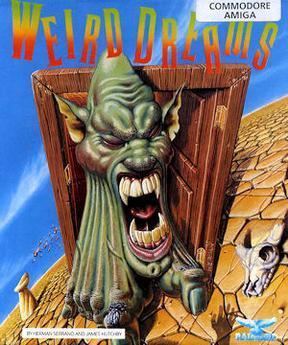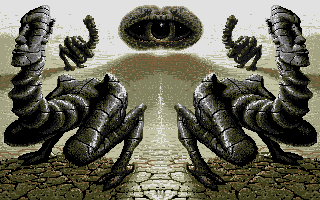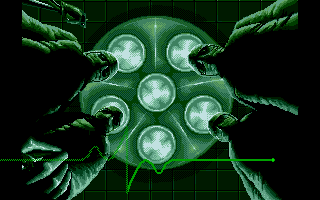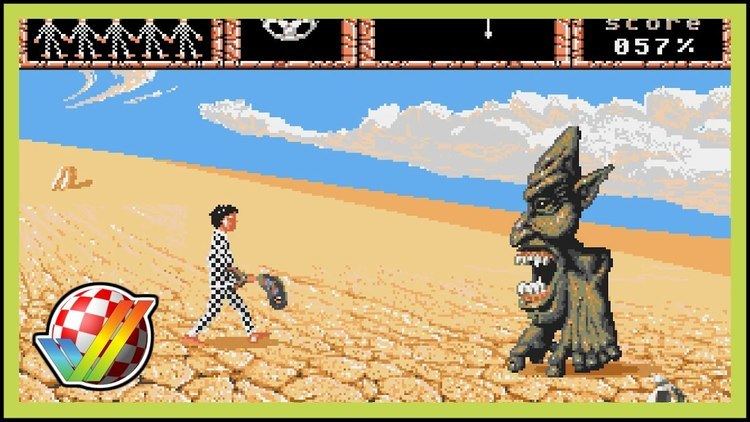Initial release date 1988 | ||
 | ||
Designer(s) Herman Serrano, James Hutchby, Tony King Genre(s) cinematic platformer adventure Developers Telecomsoft, Rainbird Software, Best Ever Games Company Publishers Telecomsoft, Rainbird Software, Microplay Software, Medalist International Similar Starglider, Waxworks, Carrier Command, The Prophecy, Starglider 2 | ||
Let s play weird dreams
Weird Dreams is a cinematic platformer game by Rainbird Software which was published for the Amiga, Atari ST, Commodore 64 and DOS. A modified version of it served as the visual component to a phone-in quiz on ITV's Motormouth.
Contents
- Let s play weird dreams
- Amiga longplay weird dreams
- Features
- Plot
- Gameplay
- Levels and enemies
- Development
- Reception
- References

Amiga longplay weird dreams
Features

The game box comes with a 64-page novella with 19 chapters written by Rupert Goodwins, featuring the back-story of the game. The novella also serves as a copy-protection mechanism (the game asks the player to type in a specific word from a certain paragraph on a particular page).

There are 15 different enemies/challenges (cotton candy stick, giant wasp, rosebush with teeth, lawnmower, soccer ball with mouth, little girl with steak knife, jack-in-the-box clown, fat dancing ballerina, hopping totem poles, desert creatures (featured on the box), fake doors, bats, a chicken monster, and a large brain with an eye in the middle), 7 different death animations and 5 different musical scores by C64/Amiga musician David Whittaker on the Amiga. Barry Leitch did the music for the Commodore 64 and PC version.

Game progress is tracked by a time counter and a heart rate monitor of Steve, which goes from 75bpm (normal) to 100bpm (in frightening situations) to 170bpm (shortly before death).
Plot
The background story is told by the novella. Steve is in love with his *attractive* coworker Emily. Unbeknownst to Steve, Emily is possessed by a daemon named Zelloripus who was banished to Earth, stripped of most of her powers, and trapped into a human female due to unspecified crimes done to other daemons.
Emily sees a chance to let someone else suffer and stifle her boredom. She tricks Steve to take three pills she has mixed to "cure his flu". While the pills do cure him, they also grant Zelloripus access to his body and mind. His dreams become both more lucid and strange, each one getting more intense and painful. Steve's psychiatrist does not understand what causes the dreams, and neither does Steve. He refers him to a neurosurgeon. After his health dramatically declines, Steve undertakes brain surgery in an attempt to stop the dreams. Under an anaesthetic, he slips into one more dream, possibly his last.
Gameplay
The game starts where Rupert Goodwins' novella ends, with Steve lying on the operating table and slipping into the dream world. Steve is controlled by the player through numerous surreal worlds. He can collect certain weapons and items on these levels, but with a few exceptions, cannot carry them to another level. Steve has no health meter; he immediately dies if he comes into contact with an enemy or an obstacle. He can also die if he remains too long in certain areas such as the Country Garden, where a lawnmower will come and decimate him. When Steve dies, the game returns to the scene in the operating room where the surgeons attempt to save him. There are no save points in the game, and instead of score points the player's progress is stated as a percentage.
Steve can acquire the following weapons/items through the game:
Levels and enemies
Development
The general plot was conceived by the developers, and Rupert Goodwins was asked to write the novella included with the game.
The scenarios in the game are not based on Serrano's own nightmares, but are inspired by the paintings of Salvador Dalí, Terry Gilliam's cartoon animations for Monty Python, and on odd observations. After a visit to the dentist, Serrano developed a phobia of teeth, which is noticeable in the design of the monsters, many of them having mouths with large teeth.
The game took over a year to produce.
Reception
Weird Dreams received mixed reviews. While most critics praised its visual style, there were some criticisms depending on the game platform. Frustrating difficulty, long loading times, and a disappointing soundtrack were common criticisms, albeit not unanimous.
